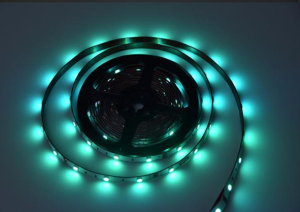LED strip lights are now a significant part of lighting design. Because they come in any size, LEDs can be used in home and architectural projects as well. Manufacturers follow a bevy of quality standards to guarantee the safety, security and consistency of their products. Consumers, designers and engineers need to understand these standards.
Common and Regional Standards
IEC Standards: Internationally, the International Electrotechnical Commission (IEC) has laid down basic standards for LED strip lights. Guidelines for LED modules used in general lighting (Second edition)IEC 62031, Ed. It includes provisions on operating temperature ranges, usually -25° C to +75°C; and test methods for validating lifespan as well as lumen maintenance.
UL Certification: In the US, Underwriters Laboratories (UL) is very important. Now, for the LED strips specifically is a standard UL 2108 which deals with Low Voltage Lighting Systems. This means that the products are approved for electric shock and fire safety. Compliance must be verified by tests (insulation resistance, dielectric strength).
European Norms (EN): Another base is the rule of EN however this standard pertains to emission& ImmunityEmission: analogous to North American contractors, Europe also pursues frequencies and regulate power input/ output model for certain club European companies in their national characteristics such as clause 1 adjacent The CTTE( commission technique Traction Elevoture) it defines basic safety methods aim principles [32]. EN standards compliance allows for LED strip lights to be sold in the entire European Economic Area (EEA).
Quality Assurance Protocols
Quality Control Inspections: Manufacturers carry out a comprehensive series of quality control checks at different stages of production. This may involve checks for color consistency, with a MacAdam Ellipse score to maintain uniformity in the LEDs. A three-step MacAdam Ellipse of less than 5 SDCM is typically associated with fine quality, where almost no colour differences between LEDs can be detected.
More lifespan test scene: The lifetime of LED strip light is an important parameter. To anticipate the lifespan of their products, manufacturers conduct simulated environmental tests on them calculating how long they can be operated under conditions like temperature. Take accelerated life testing, where LED strips are placed in an oven and cycled on-off repeatedly at high temperatures to simulate tens of years working within a few months.
IP Rating Conformation: It is a must to know the Ingress Protection (IP) rating of LED strips and weather you want it for indoor or outdoor application cause IP formed by two digits, the first one generally represents its dust protection capabilities while back put emphasis on water resistance. The ratings are IP65, meaning dust-tight and protected against water from a jet spray. These ratings are confirmed through thorough testing of dust and water immersion by the manufacturers.

Environmental Compliance
RoHS Directive The RoHS (Restriction of Hazardous Substances) is one of the most important compliance for manufacturers in Europe. The rule restricts specific dangerous materials, as lead, mercury or cadmium commonly contained in electronic components.
REACH Compliance: The REgistration, Evaluation, Authorisation and Restriction of Chemicals ( Registration for the registration etc. of chemicals) is another important European regulation. It mandates manufacturers to address the risks related to substances in their products and give safety information for consumers.
ENERGY STAR Certified - In addition to safety and performance standards, our products meet the latest energy efficiency requirements. Green consumers may be more likely to buy Energy Star-qualified products. While this lowers the amount of energy used, it also means that LED lights run cooler and with less heat you get longer life out them.
Final Thoughts
Led Strip Lights manufacturer must wade through regional and international standards to ensure that their products are both safe, dependable, and efficient. Adhering to these standards shows that a manufacturer takes its quality and safety responsibility seriously, which helps consumers trust in the brand. With the changing continuum in LEDs, one must remain updated with these norms and if you design/ manufacture LED or using as a solution; then it is important to know about IES LM79-2008.
